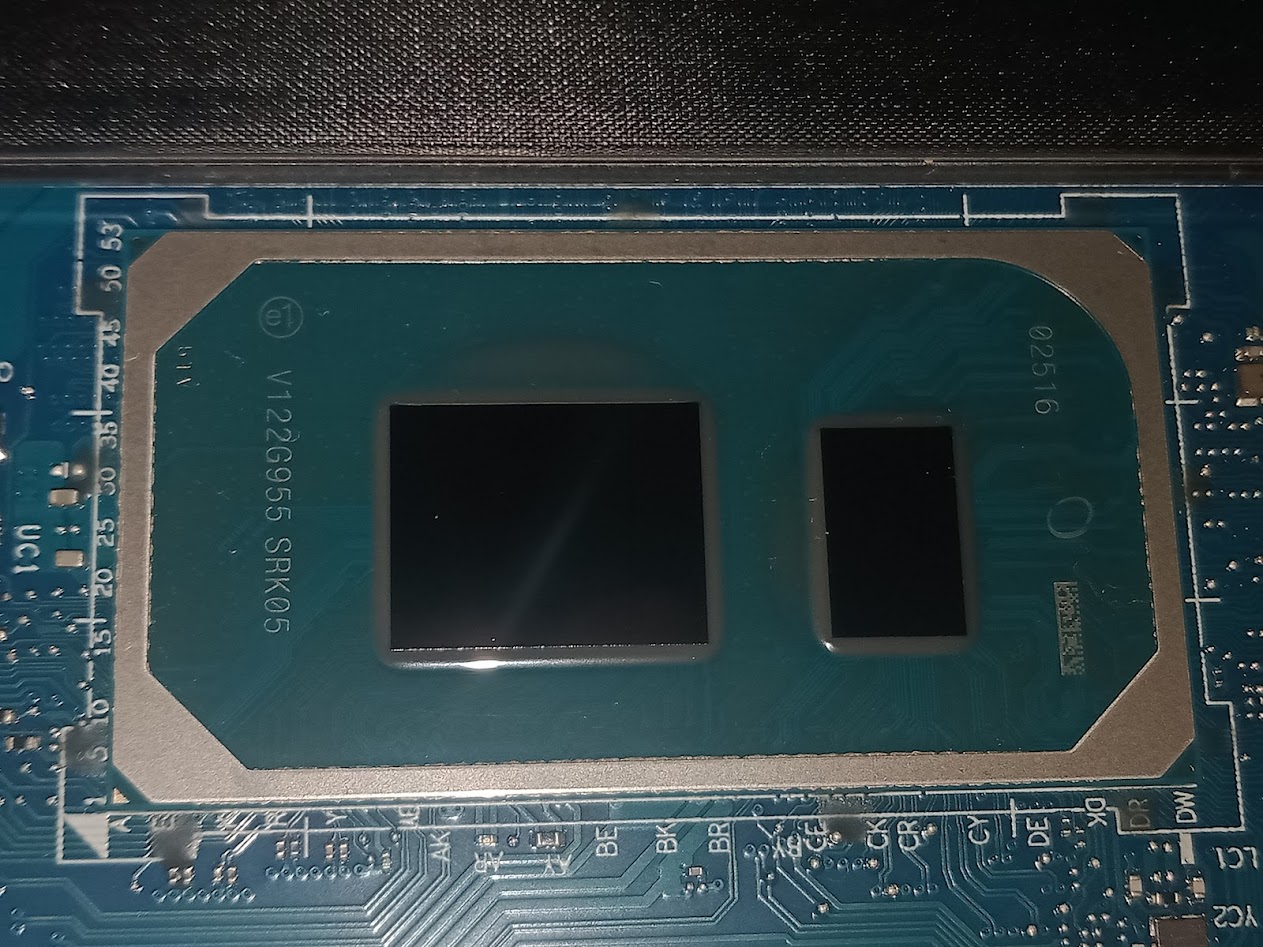Comparing: Intel Core i5 1135G7 vs Intel Core i7 720QM
In this comparison, we analyze two Processors: Intel Core i5 1135G7 and Intel Core i7 720QM, using synthetic benchmark tests to evaluate their overall performance. This side-by-side comparison helps users understand which hardware delivers better value, speed, and efficiency based on standardized testing. Whether you're building a new system or upgrading an existing one, this benchmark-driven evaluation offers valuable insights to guide your decision.
Specification Comparison Table
This specification comparison presents technical details of several devices or components to help you understand the key differences between each option. Use this table as a reference to determine which device best suits your needs.
| Specification | Intel Core i5 1135G7 | Intel Core i7 720QM |
|---|---|---|
| Architecture | x86 | x86 |
| Technology | 10 nm | 45 nm |
| Clock | 2.4 GHz - 4.2 GHz | 1.6 GHz - 2.8 GHz |
| Core/Thread | 4 / 8 | 4 / 8 |
| Segmen | Mobile | Mobile |
Submission Comparison Table
This submission comparison table displays the number and details of benchmark data submissions from various devices or components. This information helps you understand the performance based on the benchmarks that have been tested, as well as providing an overview of the consistency and popularity of the available benchmark results.
| No. | Benchmark Software | Intel Core i5 1135G7 | Intel Core i7 720QM |
|---|---|---|---|
| 1 | 7-Zip |
30697 MIPS |
10448 MIPS |
| 2 | Cinebench - 2003 |
4548 cb |
1211 cb |
| 3 | Cinebench - R11.5 |
10.37 pts |
2.71 pts |
| 4 | Cinebench - R11.5 Single Core |
2.19 pts |
0.60 pts |
| 5 | Cinebench - R15 |
936 cb |
220 cb |
| 6 | Cinebench - R15 Single Core |
199 cb |
57 cb |
| 7 | Cinebench - R20 |
2195 pts |
527 pts |
| 8 | Cinebench - R20 Single Core |
507 pts |
118 pts |
| 9 | Cinebench - R23 Multi Core with BenchMate |
5661 pts |
1024 pts |
| 10 | Cinebench - R23 Single Core with BenchMate |
1334 pts |
301 pts |
| 11 | Geekbench3 - Multi Core |
17993 points |
4158 points |
| 12 | Geekbench3 - Single Core |
4933 points |
1078 points |
| 13 | Geekbench4 - Multi Core |
19133 points |
4457 points |
| 14 | Geekbench4 - Single Core |
6098 points |
1420 points |
| 15 | Geekbench5 - Multi Core |
4699 points |
917 points |
| 16 | Geekbench5 - Single Core |
1403 points |
282 points |
| 17 | GPUPI for CPU - 100M |
26sec, 772ms |
2min, 22sec, 383ms |
| 18 | GPUPI for CPU - 1B |
5min, 49sec, 840ms |
21min, 33sec, 52ms |
| 19 | GPUPI for CPU v.3.3 - 100M |
15sec, 271ms |
1min, 25sec, 91ms |
| 20 | GPUPI for CPU v.3.3 - 1B |
4min, 6sec, 707ms |
38min, 25sec, 60ms |
| 21 | HWBOT x265 - 1080P |
29.688 FPS |
4.569 FPS |
| 22 | PCMark 7 |
8651 marks |
1630 marks |
| 23 | PCMark10 |
4692 marks |
1138 marks |
| 24 | PiFast |
15sec, 570ms |
34sec, 20ms |
| 25 | SuperPi - 1M |
8sec, 157ms |
16sec, 52ms |
| 26 | SuperPi - 32M with BenchMate |
6min, 52sec, 446ms |
22min, 4sec, 723ms |
| 27 | wPrime - 32M |
6sec, 334ms |
16sec, 279ms |
| 28 | wPrime - 1024M |
3min, 18sec, 987ms |
8min, 13sec, 257ms |
| 29 | y-cruncher - Pi-25m |
1sec, 343ms |
12sec, 665ms |
Submission Comparison Chart
This chart visualizes the benchmark scores comparison between two hardware devices based on submitted data.
Media Gallery
A collection of photos of tested hardware. These images can help you identify the physical form, model, and variant of the hardware in question. These photos are from our own documentation, and if they are not available we may not be able to document them.
About Hardware Intel Core i5 1135G7
The Intel Core i5-1135G7 is a quad-core mobile processor introduced in late 2020 as part of Intel’s 11th generation Tiger Lake lineup. Designed for thin and light laptops, this CPU delivers a strong balance of performance, power efficiency, and modern features, making it a popular choice for both casual users and professionals. Featuring 4 cores and 8 threads through Hyper-Threading Technology, it operates at a base clock of 2.4 GHz and can reach up to 4.2 GHz with Intel Turbo Boost, ensuring smooth multitasking and snappy responsiveness for day-to-day applications.
Built using Intel’s advanced 10nm SuperFin process, the i5-1135G7 offers improved efficiency and thermal performance over previous 14nm generations. With a configurable TDP ranging from 12W to 28W, OEMs can adjust the performance envelope depending on the device’s thermal design. The standout feature of this processor is its integrated Intel Iris Xe Graphics, equipped with 80 Execution Units and a dynamic frequency of up to 1.3 GHz. Compared to older Intel UHD Graphics, Iris Xe brings a massive leap in performance, capable of handling casual gaming, 4K video playback, and GPU-accelerated workloads like video rendering or image editing.
In benchmark tests such as Cinebench R23, the i5-1135G7 scores around 5661 points (multi-core) and 1334 points (single-core), showcasing excellent performance for a low-power chip. These scores reflect its capability to handle modern productivity software, web-based workflows, and even creative tools like Adobe Photoshop or Premiere Pro though for heavier workloads, a higher-end CPU may still be recommended.
Real-world performance testing was done on a Lenovo IdeaPad Slim 3i 14ITL6, a budget-to-midrange laptop equipped with 12GB DDR4 3200MHz dual-channel memory (8+4 configuration). This setup, combined with Windows 10 and Windows 11 22H2, allows the i5-1135G7 to fully utilize its integrated GPU and high-speed memory interface for a snappy and responsive user experience.
Whether you're a student, a professional, or a casual user looking for a capable, energy-efficient processor, the Intel Core i5-1135G7 stands out as one of the best value choices in the ultrabook category.
Hardware Detail:
Device: Lenovo IdeaPad Slim 3i 14ITL6
RAM: 12GB DDR4 3200MHz Dual Channel (8+4)
OS: Windows 10, Windows 11 22H2
Friday, 06 August 2021 04:34:04 | Update: 1 month ago
About Hardware Intel Core i7 720QM
The Intel Core i7-720QM, launched in Q3 2009, was one of the first mobile quad-core processors to feature Intel's Nehalem microarchitecture, specifically the Clarksfield variant. Targeted at high-performance laptops, such as gaming machines and mobile workstations, the i7-720QM brought 4 physical cores and 8 threads to the mobile platform, thanks to Hyper-Threading Technology providing a significant boost in multi-threaded workloads like video editing, 3D rendering, and other professional-grade applications. The processor runs at a base clock speed of 1.6 GHz, but it can dynamically increase up to 2.8 GHz using Intel Turbo Boost, depending on thermal headroom and power availability.
Manufactured using a 45nm process, the i7-720QM has a TDP of 45W, which is quite high by today's mobile CPU standards. This thermal demand necessitated more robust cooling solutions in laptops that featured the chip. Unlike modern CPUs, the i7-720QM does not come with integrated graphics, which means systems based on this processor require a dedicated GPU often from AMD or NVIDIA for graphics processing and display output. As such, it was typically paired with mid-to-high-end discrete graphics cards in its time, making it a solid choice for gaming and multimedia laptops in the late 2000s and early 2010s.
While the Core i7-720QM was a powerhouse during its release, its performance and efficiency are significantly outpaced by modern CPUs built on smaller nodes and with higher IPC (Instructions Per Clock). Nevertheless, legacy laptops using the i7-720QM can still be viable for basic computing tasks like web browsing, document editing, or watching videos especially if paired with an SSD upgrade and increased RAM. Users running Windows 10 on such systems may experience some limitations, but with proper optimization and lightweight software, the CPU can still deliver a usable experience in non-demanding environments.
Hardware Detail:
Device: HP Pavilion dv3-4054TX
RAM: 4GB DDR3 Single Channel
OS: Windows 7, Windows 10
Tuesday, 19 July 2022 19:48:49 | Update: 1 month ago






